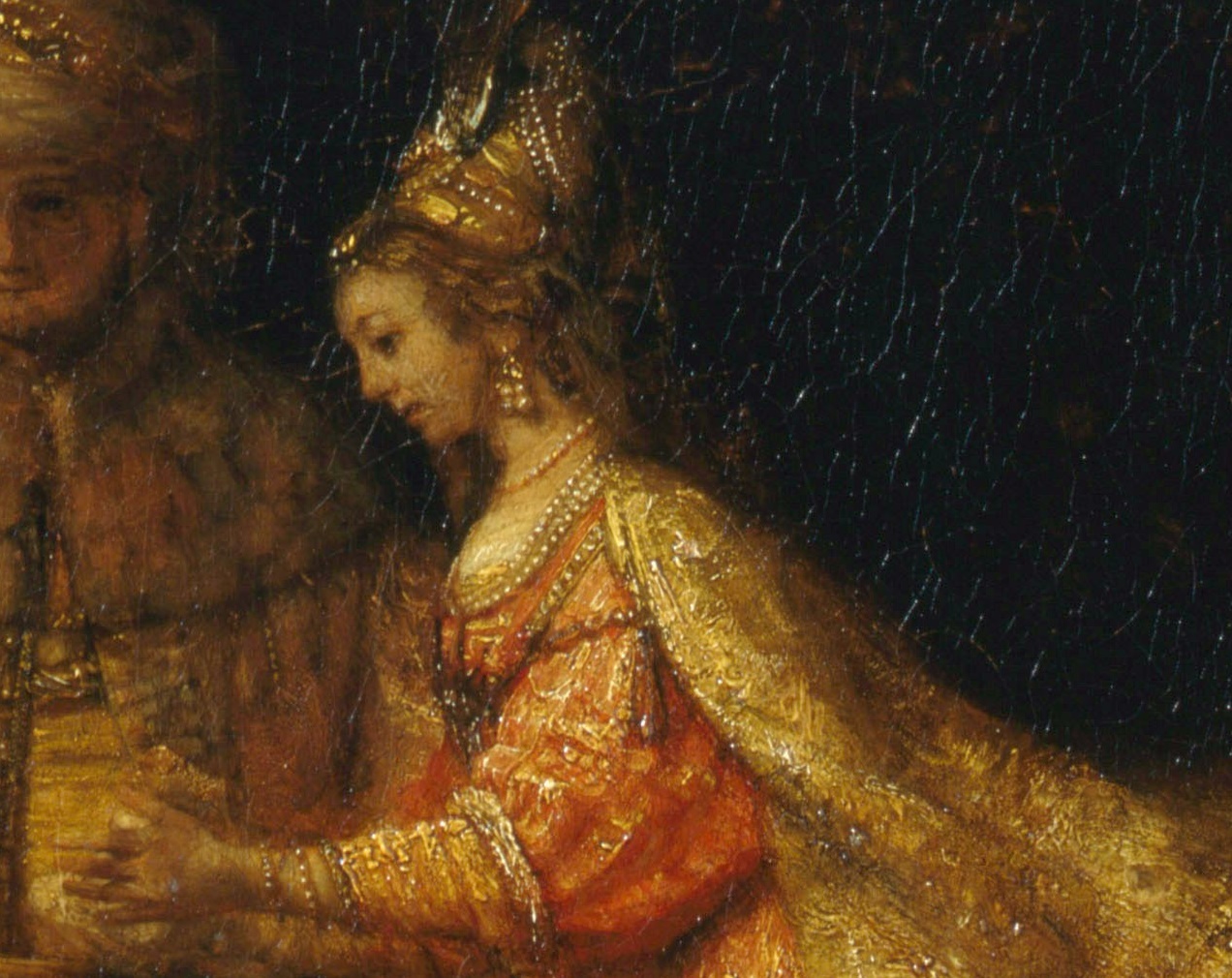In the Torah, a hero is not someone who chooses to do precisely what he or she wants to do as an individual, not someone who never does wrong, and certainly not someone who never errs. In the Torah, a hero is someone who accepts responsibility for his or her people and looks out for them, even at great personal cost. Jewish heroes are usually people who make mistakes, of varying degrees of severity, and then own up to those mistakes and try to fix the damage caused by their actions. They’re also known for their connection to G-d, sometimes even for their willingness to challenge G-d’s will.
Jews often regard Esther, one of the protagonists of the Purim story in the Book of Esther, as an example of a Jewish hero. Typically, she is portrayed as an indulger in luxury who creates a happily-ever-after life for herself at the conclusion of the story. However, in the actual text of the Book of Esther — unadulterated by the impressions of five-year-old girls eager to dress up as a queen for Purim — Esther is portrayed as a strong woman who tries to make sense of inexplicable changes in her life. In this more accurate portrayal, Esther rises to the challenge of saving her people from a politically motivated attempted genocide, and proceeds to fade into apparent irrelevance at the conclusion of the story.
Born into the post-Holocaust generation of her era — during a time when the destruction of the kingdom of Judah and exile from the land of Israel had recently befallen the Jewish people — Esther attempted to rebuild the shattered lives and broken faith of Jews outside of the land in which they had lived in for nearly a millennium. Contrary to the perceptions of youngsters raised on Disney-esque romances, Esther’s life among the Jewish exiles took an awful turn with the beginning of the Purim story. She was forcibly taken to the beauty pageant of a king who ordered his last wife executed in a drunken rage, who kept a “women’s house” with hundreds of women for his own purposes, and who was of a culture and religion not her own. According to the Babylonian Talmud (Megillah 13a), based on unusual phrasing in the description of Esther’s relationship to her cousin Mordecai in Esther 2:7, Esther and Mordecai were actually married prior to Esther’s abduction to Ahasuerus’ court, a situation which also explains Mordecai’s daily visits to check on her when she was in the palace. Esther never had any voice in her forced marriage to Ahasuerus and held no power in their relationship. Technically, according to Jewish law, since she had not given consent, her marriage to Ahasuerus was invalid. Moreover, because of her passive role in their relationship, she was considered to be raped and would therefore — excluding the limitations of her situation in the palace — be able to return to Mordecai at some point. However, her situation completely changed once Haman’s genocidal plot to came into the picture.
With Haman’s decree to kill freshly distributed throughout the Persian Empire, Mordecai went to the palace gates and sent a messenger to Esther, asking her to intercede with Ahasuerus on behalf of their people. One can only imagine Esther’s loneliness and complete isolation, since unlike all of the other residents of Shushan, the Book of Esther makes is clear that she had not even heard of the murderous edict until her maids informed her of the news. On the surface, Mordecai’s request is for Esther to reveal her identity as a Jew to the man who carelessly signed the Jews’ death warrant, and in so doing risk her life by going to Ahasuerus’ court without a summons. However, the request carried more meaning than just its surface would indicate, as she was to go to Ahasuerus, meaning she was to become an active partner in their relationship. According to the Babylonian Talmud (Megillah 13b), in doing so, Esther would be choosing to commit herself to Ahasuerus and would never be able to return to Mordecai and her Jewish life.
Esther knew what she was giving up. In some of the final communication between Esther and Mordecai, Mordecai tells her that perhaps her position as queen was entirely for the purpose of saving her people. Esther does not explicitly agree with Mordecai and she does not mourn her former life among fellow Jews. Instead, she asks Mordecai and her people to fast and pray for her, and powerfully concludes, “And if I am lost, I am lost.” Esther knew that even if she succeeded in not dying in Ahasuerus’ throne room for her Jewish identity, she was lost to Mordecai and lost to Jewish continuity. She would live the remainder of her life among strangers and in opulence, and when her people would return to Israel from their exile in Persia and build the Second Holy Temple, she would remain behind to die in Shushan.
Esther is a hero not because of her position as queen of the Achaemenid Empire or even necessarily because of her successful role in Haman’s downfall, but because she took responsibility for her people. Like other biblical Jewish heroes such as Abraham, Jacob, Rachel, Joseph, Moses, David, Daniel and numerous pre-monarchical prophets such as Deborah and Samuel, Esther was willing to put her own life on the line and give up personal comforts and hopes for the sake of the survival of her people and the wellbeing of its future generations. Even though she had no Jewish descendants, her model of responsibility and initiative survives through her eponymous book. Aside from Purim, in which the Jewish people remember and honor her efforts and and their miraculous salvation, the Fast of Esther is still observed today as well, over 2000 years after Esther asked the Jewish people to pray and fast on her behalf.

